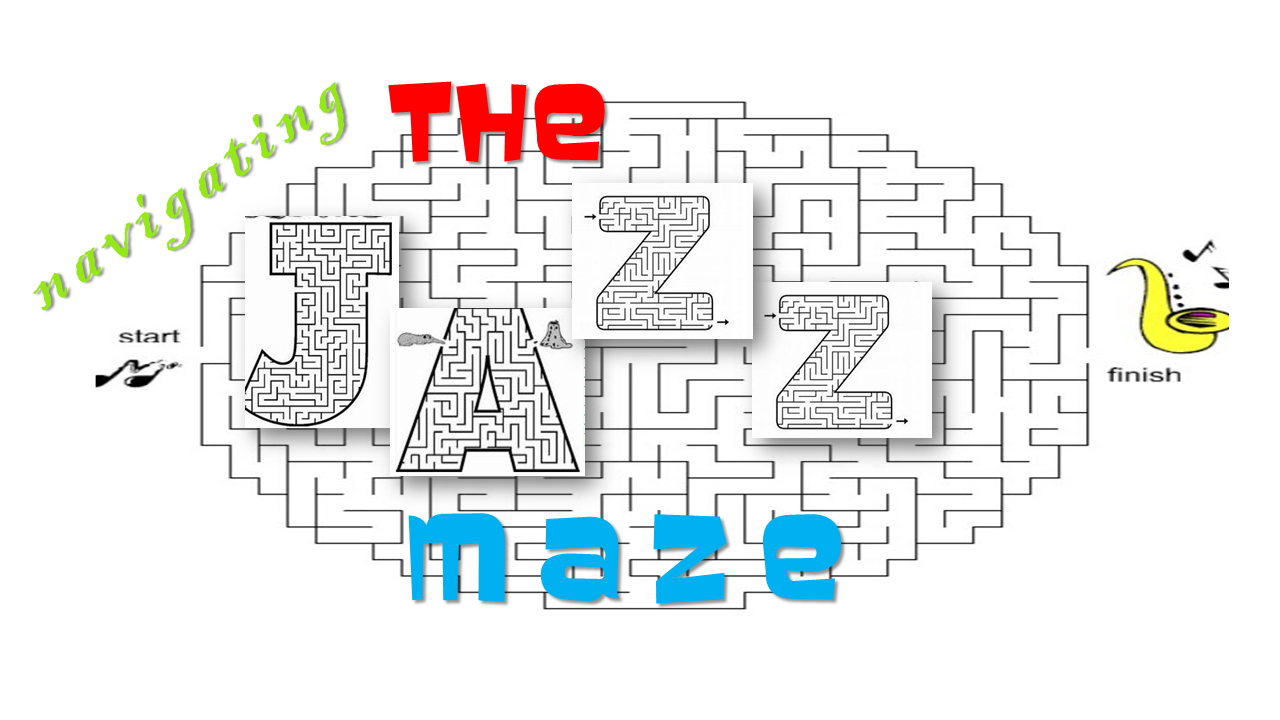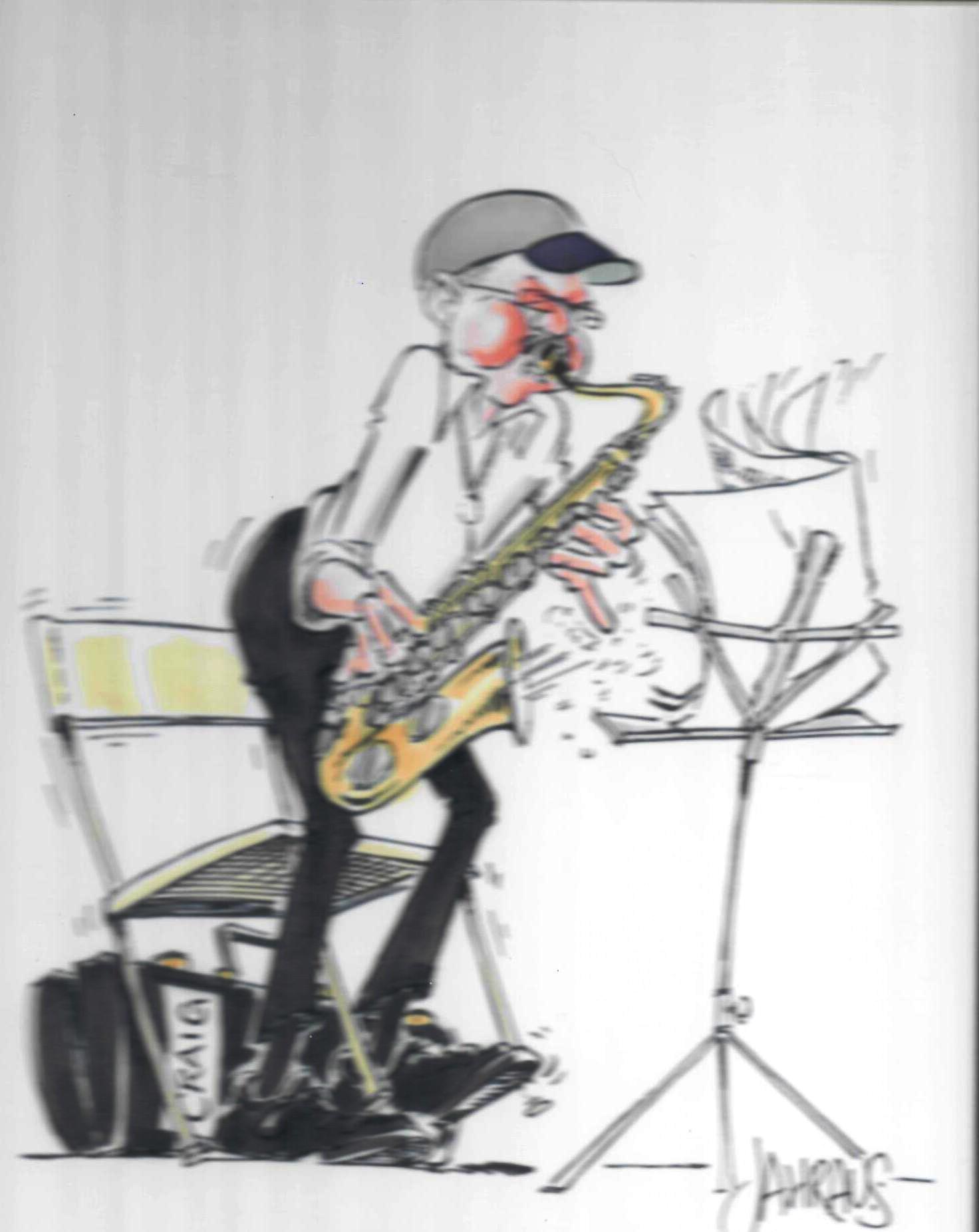 Pianist Dr. J. H. asked for a melodious exercise he could use to explore the harmonic minor scale in all 12 keys. The “harmonic minor scale” features the natural 6th degree FA along with the raised 7th degree. The raised 7th degree in a minor scale is the syllable known as “si” (pronounced “SEE”). It’s also referred to as “#SO” or “#7.” That scale is shown here:
Pianist Dr. J. H. asked for a melodious exercise he could use to explore the harmonic minor scale in all 12 keys. The “harmonic minor scale” features the natural 6th degree FA along with the raised 7th degree. The raised 7th degree in a minor scale is the syllable known as “si” (pronounced “SEE”). It’s also referred to as “#SO” or “#7.” That scale is shown here:
Tag: ear training
I Dig This One !
 Does improvising bring you joy? If you’re playing music you love, both you and your audience will be swept up in that transcendent joy. Here’s a topsy-turvy, tangled up, spaghetti-shaped, four-bar phrase that just tickles my spirit every time I play it. Hope you dig it too. Click here to watch the video.
Does improvising bring you joy? If you’re playing music you love, both you and your audience will be swept up in that transcendent joy. Here’s a topsy-turvy, tangled up, spaghetti-shaped, four-bar phrase that just tickles my spirit every time I play it. Hope you dig it too. Click here to watch the video.
Fresh Out of Ideas
Tenor saxophonist Brooklyn brought a favorite tune to his lesson. As always, we typed the changes into Band in a Box, chose a tempo and a groove, and started blowing on the tune. But Brooklyn said he was having trouble coming up with fresh ideas to play over the changes.
Another Blues Scale
Click here to watch the video.
The blues idiom offered early twentieth century musicians a new way to share deep emotional feelings vigorously and honestly.
A hundred thirty years earlier, Mozart had reveled in the fresh, airy lightness of the major tonality which superseded stolid Renaissance modal forms around 1600.
Periodic innovations like these keep music vibrant and invigorating. Unfortunately, too many of today’s musicians bloat their playing with endless, unimaginative, repetitive blues licks. Sure, blues licks can add a funky edge, but overuse of these clichés leads to tiresome monotony.
(And so on, and so on….Well, you get the idea!)
Rhythm 2: Express Yourself!
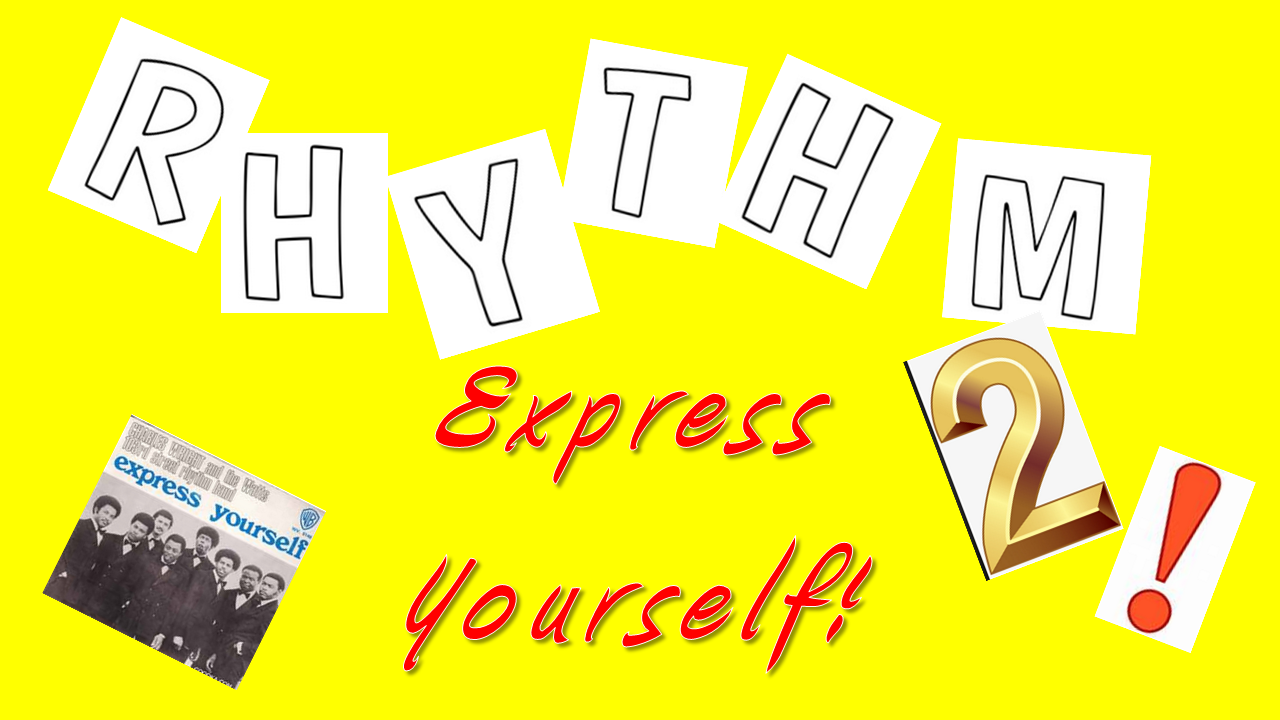
Swinging rhythms are the foundation and heartbeat of great jazz. Our first “Rhythm” video was a primer on how to play jazz rhythms. Click here to watch it.
In this video, we’ll talk about how you can use rhythm to effectively express yourself: your thoughts, your feelings, your personality, your unique story.
I feel so much more like I do now than I did when I first got here.*
Jazz gigs seldom turn out exactly as we expect them to. Since jazz is, by definition, an improvised art, this should come as no surprise. It’s a maze which often thrills, sometimes shatters, and continually amazes us.
Let’s say, for example, that you arrive at the gig late, stressed, un-showered, and unready to perform. It’s at this point that a fan drops a hundred dollar bill in the tip jar, Herbie Hancock asks to sit in, and your first solo provokes a standing ovation. In your dreams, right?
The nature of jazz will, at times, lead to the unexpected, to exciting innovation, to surprise, to joyful discovery. …Occasionally, it leads nowhere. After all, life’s mazes do include blind alleys. Just the same, we “press on regardless” (as my father often preached on rainy hikes), in search of the perfect note, aye? Continue reading “I feel so much more like I do now than I did when I first got here.*”
BLOW TILL YOU KNOW
Are you struggling to develop a personal improvisatory style or to find your unique compositional voice? Well, you’re not alone! Many musicians grapple with these dilemmas.
Perhaps my own story will help you unearth your path to musical originality.
I started playing because I love the way music sounds, the way playing the horn feels, the exhilaration of working with a great band of like-minded musicians. A couple years later, I began writing songs, just so we’d have originals for gigs and recordings. I didn’t think twice about trying to be original. On the contrary, emulating the masters was satisfying. It seemed to legitimize and validate my work.
However, about 10 years into my career, I suddenly faced an existential crisis, when nagging questions like these began keeping me awake at night:
“Is this composition any good? Is it too long? Which sections are valid and which need to be scrapped? Should that note be a Bb or an F#? Do my solos stink? What right do I even have to compose music or play the horn, when there are so many musicians out there who are way better?”
Chromatic Cro-Magnum P.I. (Practice Improv)
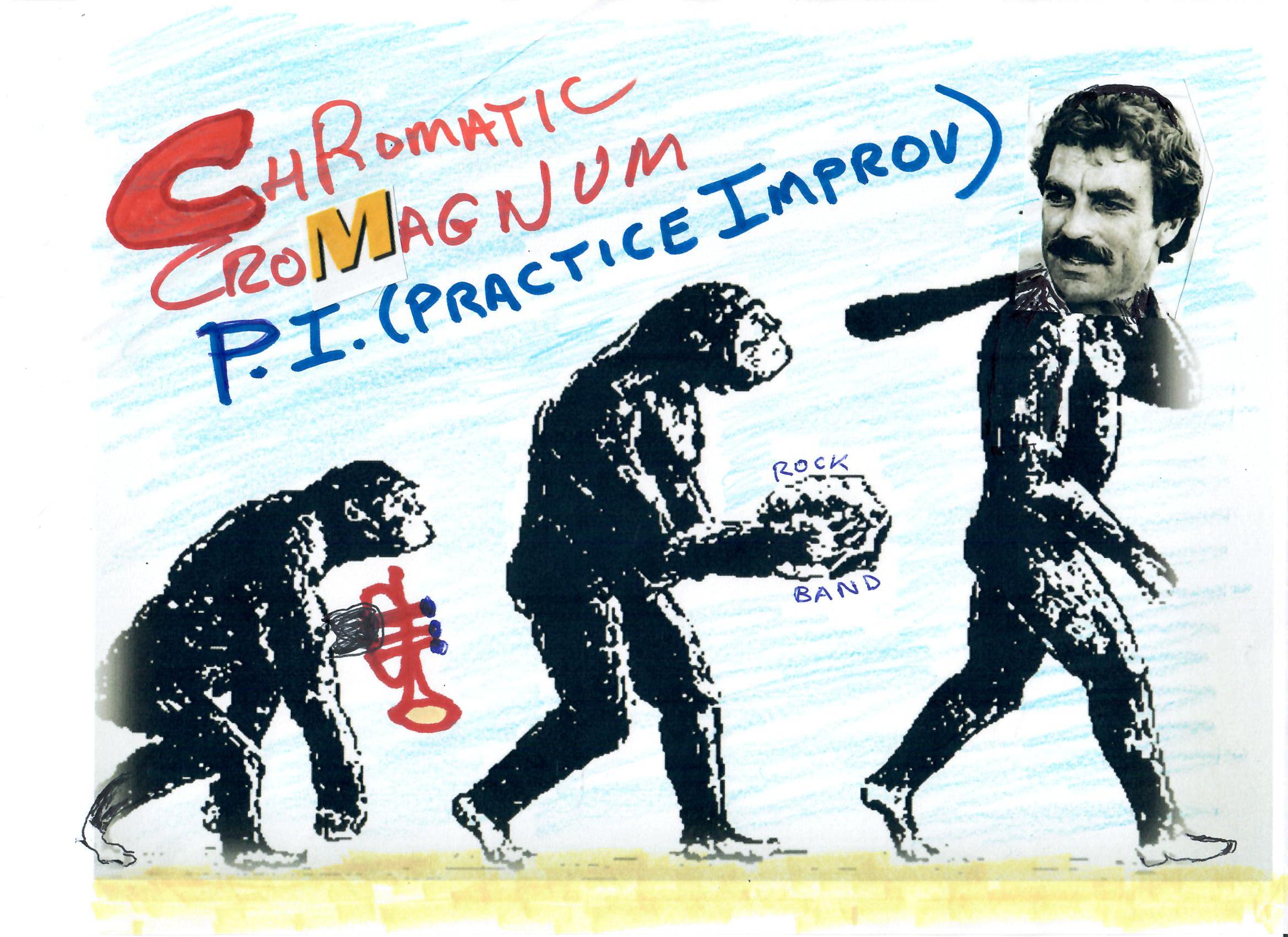 Ever feel totally drained after a big gig with no steam left to practice, like a malnourished Cro-Magnon? That’s how I felt this morning, after last night’s intense concert backing up my friend presenting 14 of his complex original compositions.
Ever feel totally drained after a big gig with no steam left to practice, like a malnourished Cro-Magnon? That’s how I felt this morning, after last night’s intense concert backing up my friend presenting 14 of his complex original compositions.
What’s a person to do? Well, “one foot in front of the other,” as the old saying goes. Just start blowing long tones; dig the sound of the horn, experience the feeling of wind on reed, fingers on pearls.
Here’s what emerged after an hour or so; a little chromatic meander that caught my imagination. As harmonized in this sketch, it forms a Dorian setting reminiscent of “So What,” “Little Sunflower,” “Jeanine,” or “Invitation.” It could also have been harmonized as a ii-V progression in C major modulating to D minor.

Click on “continue reading” below to see a chart and hear the recording in all 12 keys.
Continue reading “Chromatic Cro-Magnum P.I. (Practice Improv)”
Compose, Improvise, Practice: Three Birds, One Stone!
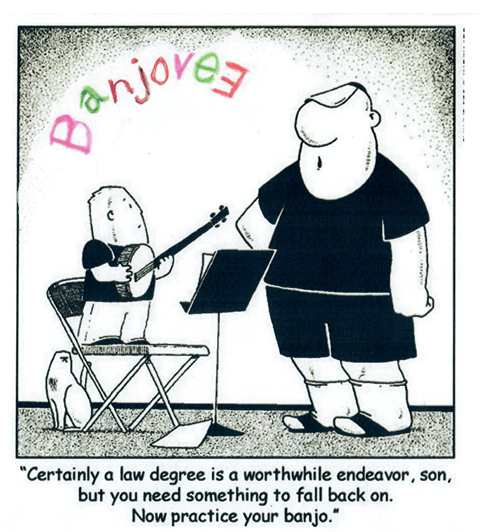
Do you ever NOT feel like practicing? If your go-to staple is a dry method book, you’ll probably answer “yes” – if you’re really honest.
On the other hand, if you dream of becoming an inventive improviser or an innovative composer, then read on!
Continue reading “Compose, Improvise, Practice: Three Birds, One Stone! “
SUPERSTITION: Don’t Let It Rip Off Your Musical Spark !

CLICK HERE to view the video on YouTube. Click “continue reading” below to download the chart and background track or to read the script.
Continue reading “SUPERSTITION: Don’t Let It Rip Off Your Musical Spark !”
Half-Diminished? Minor 7, Flat 5? Aaargh !!
Click the link below to read the script of this video.
Continue reading “Half-Diminished? Minor 7, Flat 5? Aaargh !!”
Discovering Your Personal Jazz Improvisational Style
Click on “continue reading” below to see the text of this video.
Continue reading “Discovering Your Personal Jazz Improvisational Style”
Got Improv?
You can learn how to improvise like a professional jazz musician! Watch this video to see how you can begin the exciting journey towards becoming a jazz improviser.
Learning to Play by Ear: A 1958 Perspective
 How does a musician learn to perform thousands of songs in any key without looking at music sheets? How can you improvise over a set of “changes” you’ve never heard or seen before in a live performance? “New Ears Resolution” has made this a daily reality for me during a 40-year career of recording dates and live performances. But I cannot claim to have created this revolutionary approach to ear training. I learned it during high school while studying with Alvin L. “Al” Learned, founder and president of Hollywood’s legendary Westlake College of Music “one of the most important educational institutions for the study of jazz in the post-World War II era.” Continue reading “Learning to Play by Ear: A 1958 Perspective”
How does a musician learn to perform thousands of songs in any key without looking at music sheets? How can you improvise over a set of “changes” you’ve never heard or seen before in a live performance? “New Ears Resolution” has made this a daily reality for me during a 40-year career of recording dates and live performances. But I cannot claim to have created this revolutionary approach to ear training. I learned it during high school while studying with Alvin L. “Al” Learned, founder and president of Hollywood’s legendary Westlake College of Music “one of the most important educational institutions for the study of jazz in the post-World War II era.” Continue reading “Learning to Play by Ear: A 1958 Perspective”
Darn That Dexter!
 Dexter Gordon is universally revered by saxophonists for his muscular sound. He is equally effective on ballads, blues, and fast tempos.
Dexter Gordon is universally revered by saxophonists for his muscular sound. He is equally effective on ballads, blues, and fast tempos.
His Blue Note LP One Flight Up includes a fine reading of the Jimmy Van Heusen ballad “Darn That Dream” on which he dexterously employs a device favored by Charlie Parker. This maneuver involves momentarily raising the key a half-step and inferring a ii-V progression in that key.
Here are two instances in which Dexter deftly employs that ploy. As anyone who has ever tried to transcribe his solos knows, one of the hallmarks of Dexter’s style is his unique approach to rhythm. While his languid phrasing is pure joy to hear, it’s a nightmare to transcribe. I have greatly simplified the rhythm in these two examples, focusing instead on the pitches Dexter chose for the brief modulation. Continue reading “Darn That Dexter!”
Why Is This Tune So Hard To Memorize?
Have you ever had difficulty playing a tune, even though it presented no obvious technical hurdles? Perhaps the problem lies in a hidden harmonic riddle, which, when solved, will unlock your understanding of the song and make it easier to play and to remember.
At a recent gig, pianist Mark Schecter called off Dizzy Gillespie’s “Groovin’ High.” Although Storyville used to play the song, it still made me stumble. However, after deciphering its harmonic implications, playing it became simple.
Here’s how to solve a riddle like that.
How to Learn Songs
Is there a more effective, efficient method for learning and retaining a large repertoire of jazz standards? Continue reading “How to Learn Songs”
Dominant Seven Flat 9 Chords V7(b9)
One of the features that makes a minor key sound so rich is its V7(b9) chord illustrated below as a V-I in the key of A minor. ![]()
The exercise shown below will greatly increase your familiarity and confidence in improvising over this lovely chord. Continue reading “Dominant Seven Flat 9 Chords V7(b9)”
HOW I LEARNED TO PLAY BY EAR
Even many accomplished musicians never learn the fine art of playing by ear. A strong ear is a “must” for those of us musicians with visual disabilities. I owe my ear to a uniquely inspired teacher. The story begins in 1963. Continue reading “HOW I LEARNED TO PLAY BY EAR”
Thematic Development Galvanizes Your Solos
 Do your solos brim with vitality, gliding across a colorful landscape, as you explore ever deeper into the ocean of sound? Or do you flounder among waves of notes, swimming through a maze of chord changes?
Do your solos brim with vitality, gliding across a colorful landscape, as you explore ever deeper into the ocean of sound? Or do you flounder among waves of notes, swimming through a maze of chord changes?
 Thematic development will transform your playing, as you weave your exciting, personal story.
Thematic development will transform your playing, as you weave your exciting, personal story.
The following clips illustrate three powerful tools to stimulate your creative potential and enthuse your audience.
1. RHYTHMIC SHIFT – Example 1 presents a 7-beat phrase that starts on the “and” of beat 3. The phrase is then repeated, but this time, it begins on the “and” of beat 2. Repeating the phrase gives your thought unity, while the rhythmic offset offers variety and surprise. Try playing along with this recording in all 12 keys.
2. DIMINUTION – In example 2, the 7-beat phrase is the same, but a triplet compresses the second statement of the theme. Your motif is still easily recognized, but you have added variety.
3. TONAL SHIFT – In Example 3, the second statement of the theme modulates up a minor third. Tonal shift was a favorite device of John Coltrane. The listener still recognizes your theme, but her ear delights in this fresh new element you have added to the mix.
As you become more comfortable with creating and developing thematic material, your unique personality defines your individual style. You improvise dynamically and coherently.
To master these 3 techniques, play along with the 3 audio files offered here. Contact me, if you need a chart. Or, if you want to learn to play by ear in all 12 keys (as I did while recording these clips), download “New Ears Resolution” and liberate your musical imagination!
Do You Enjoy Practicing Scales?
How often do we teachers hear students complain about having to practice long tones and scales? Every teacher knows that long tones greatly enhance tonal quality and intonation and that scales are the raw material from which improvised solos are crafted. The problem is that any musician who practices being bored will bore the audience. What you practice is what you perform. Practice joy, imagination, and freshness, and your show will be fresh. Practice dry technique, and your gig will be a desert.
Below is a 4-bar phrase containing a descending major scale (Ionian mode) and an ascending Mixolydian mode. I worked on this exercise until the rhythm and note sequence started to feel interesting to me.
Try playing along with the background track provided below and see if this approach adds a bit of zest to your practice time. Develop your own variations on this idea. Email me for a FREE copy of this exercise in all 12 keys, if you have trouble figuring it out. Better yet, download “New Ears Resolution” and learn how to play any melody in any key by ear.
Happy New Year, Sonny Rollins!
What a great way to ring in 2015! We watched “Labor Day” on Netflix, and then I revisited Sonny Rollins’ 1998 CD “Global Warming.” Sonny has a wonderful ability to compose simple melodies that swing. And, of course, the unique way he develops motivic material during his solos is legendary. Solos brimming over with life and joy. I just had to pick up my horn and play along. Here is the lick that emerged, Adolph Sax’s new year’s gift.
 Try playing along with this melodic minor phrase in all 12 keys using this background track. If you have trouble transposing it, email me for a free chart. Or download “New Ears Resolution” and learn how to play any melody in any key by ear.
Try playing along with this melodic minor phrase in all 12 keys using this background track. If you have trouble transposing it, email me for a free chart. Or download “New Ears Resolution” and learn how to play any melody in any key by ear.
Improvising Using Skips
Are your improvisations based more on the chord changes (Coleman Hawkins approach) or on the melody (Lester Young approach)? Many players look at the chord progressions and derive either arpeggios or scale patterns based on the indicated changes. Here is an exercise that will develop your ability to integrate larger leaps into your melodic flow.
To derive the maximum benefit, practice this pattern in all 12 keys around the circle of fifths using the background track provided below. If you have difficulty figuring out the pattern in the other keys, contact me for a FREE chart (no cost or obligation). Better yet, download “New Ears Resolution” to learn how to play any melody in any key BY EAR!
Noted Guitarist Praises “New Ears Resolution”
This review of the Second Edition of “New Ears Resolution” was posted by the wonderful guitarist, singer, and educator Trevor Hanson http://trevorhanson.com/trevor/ . Trevor is highly respected for his work in both the jazz and classical fields and has a large following in Western Washington State.
- Basic concept: great. The basic concepts and the way you have organized their presentation are very useful. You have many good insights and analogies to help get students on board, even if they have had little formal training. There’s no question that moveable-do solfege is a tremendous learning aid, and you’ve done a good job at making it accessible and understandable. The early parts of your presentation assume that the reader has little or no background in music theory.
- Combining essential skills in small lessons. By combining ear training, scale/harmony theory, and repetition and presenting the material in small, easily manageable chunks, you’ve provided an excellent framework for learning that doesn’t overwhelm the student. Many theory books cover this material in just a few pages – making it difficult for students to achieve a working knowledge of (and quick memory for) these essential elements.
- Familiar tunes as examples. Linking little phrases to familiar tunes is very helpful. This is how most of us recognize intervals, patterns, and progressions. By providing examples, you save students time, since recognizing a short quote is often difficult.
- Audio files. Listening to and playing along with the audio files is a huge advantage.
- Scale/chord material. Your presentation of the scale modes is very good. I really like the clear examples showing how each mode can be derived from the Ionian, the examples showing how each modal color can be used, and the charts/audio exercises that contrast these elements. I found your discussion of Locrian m7(b5) and Phrigian sus(b9) even more useful. I ran out of time before getting a chance to look at Bill Green’s approach to the blues scale and V7#9#5 chord, and am looking forward to examining this section. These are all really important topics that most musicians just have to figure out by experimentation. You have provided a logical starting point for studying these elements.
Sincerely,
Trevor Hanson
www.TrevorHanson.com
Combining the Blues Scale With the Minor Scales
There is a lot of talk in improvisation texts about the three minor scales (which start on LA), the Dorian mode (which starts on RE), and the blues scale (which can begin on either one). However, the reality is that master jazz improvisers glide freely between all five scales with additional nuances interspersed. Below is a lick to illustrate this principle. Listen to the mp3 recording while looking at the chart. Try practicing this lick in all 12 keys. If you have difficulty, try slowing it down or looping the hard section with the FREE DOWNLOAD Best Practice. Or contact me for a FREE chart of the lick in 12 keys by filling in your email below. Your address will NOT be used for any other purpose, and it will NOT be saved. Better yet, if you want to learn to play jazz by ear, download New Ears Resolution.
You Can Learn to Play by Ear with “New Ears Resolution”
New Ears Resolution has helped hundreds of musicians learn to play by ear over the past 15 years. And now, the Second Edition offers scores of new innovations designed to make your learning experience more enjoyable, effective, and thorough.
Download “New Ears Resolution” for just $9.99. Click here.
OR Purchase the physical book and CD via PayPal for just $19.99 plus shipping. Click here.
 Whether you work with a jazz combo, rock group, or big band, or just play for your own pleasure, “New Ears Resolution” will help you become the musician you have always wanted to be.
Whether you work with a jazz combo, rock group, or big band, or just play for your own pleasure, “New Ears Resolution” will help you become the musician you have always wanted to be.
i’ve taught this method for years and have used it in my own performances. i’ve researched extensively in order to improve its design and have thus developed a comprehensive approach to the art of playing by ear.
HOW IS “NEW EARS” DIFFERENT FROM OTHER METHODS?
Continue reading “You Can Learn to Play by Ear with “New Ears Resolution””




